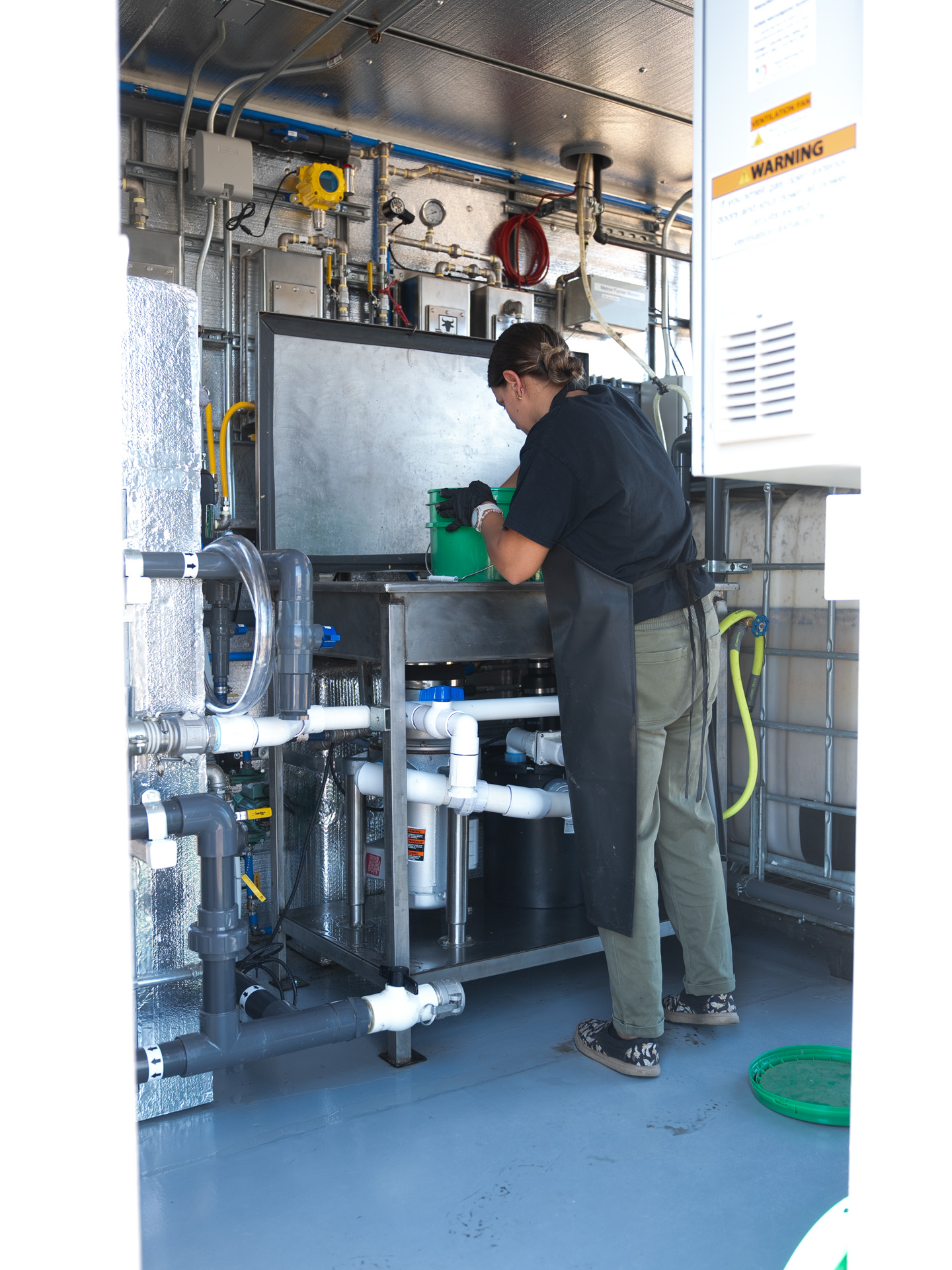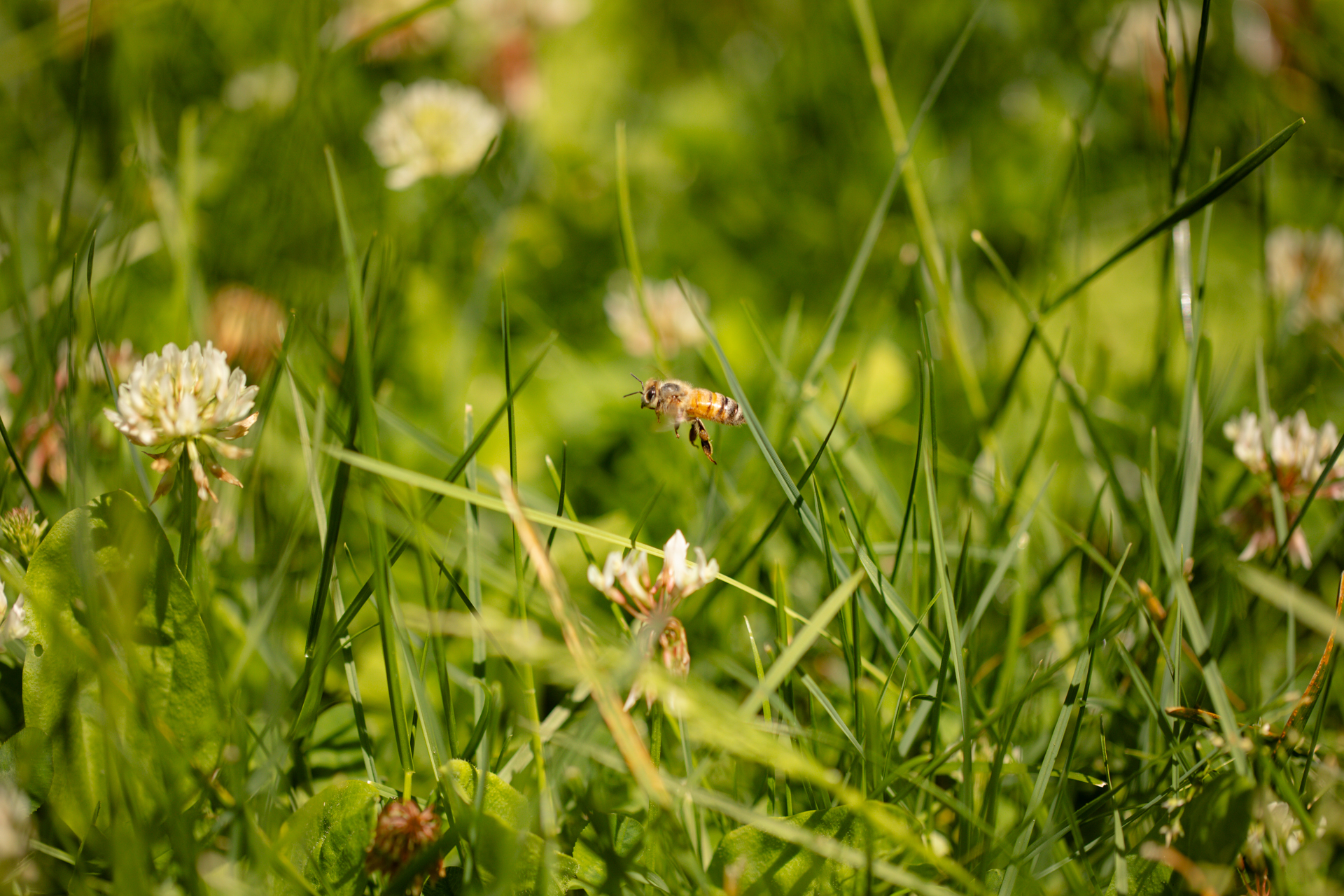Story Content
Sacramento State’s new digester turns food scraps into fertilizer and electricity
July 12, 2024
There’s a “cow” in Sacramento State’s BAC Yard, but don’t expect it to moo.
Sac State Sustainability’s new food waste digester not only turns kitchen scraps into safe, nutrient-rich fertilizer, it also produces methane gas that can be used to power campus events — and maybe even an electric car.
“Just imagine a giant cow’s stomach,” Waste and Sustainability Analyst Laura Gonzalez-Ospina said. “It works exactly the same.”
The digester is the latest way the University is reducing waste going into area landfills, efforts that are earning national recognition. Later this summer, the Sustainability office will receive the 2024 Outstanding Waste Prevention Award from the California Resource Recovery Association (CRRA).

Sac State also earned its third STARS Gold rating from the Association for the Advancement of Sustainability in Higher Education. This year’s score of 73 is the University’s highest-ever on the self-reported rating system, conducted every three years to measure sustainability success.
“There’s been a huge push in the last couple of years to reduce our waste, and the fact that we received the CRRA award and grew in that space within STARS shows that all our efforts have really paid off,” said Ryan Todd, director of Energy and Sustainability. “It means we’ve been putting our efforts in all the right places.”
The new digester, worth $200,000, was a gift from Cal Maritime, which was unable to use it. The machine is housed in what looks like a metal shipping container in the Bioconversion and Agricultural Cooperative Yard – the BAC Yard – where Sustainability has a garden, honey bee hives and composting areas.
Food waste from some campus eateries and the ASI Children’s Center is delivered to the BAC Yard, where staff carefully pick out plastic contaminates, large pits and other items that could clog the machine.
The organic waste is poured into a metal vat and fed into an industrial version of a household garbage disposal, where it is ground up and mixed with the same bacteria found in a cow’s stomach. The bacteria break down the food and, within 24 to 72 hours, produces a clear, odorless liquid fertilizer.
“It’s high in carbon and nitrogen and other properties we want,” Gonzalez-Ospina said. “It’s better than any chemical fertilizer being used on campus now, so we hope to use this organic fertilizer to replace some of the not-so-good ones we’re still using.”
Any leftover fertilizer will be donated to the community the same way Sustainability gives away unused compost.
Students and faculty will also have access to the digester, and faculty have already approached Sustainability about testing the fertilizer on soil.
“We want this to be a living lab for students to get experience doing research on things such as food-to-gas ratios, biodigestion itself, and learning how to use our own food waste to create methane and electricity,” Gonzalez-Ospina said.
The digestion process also creates methane gas, but instead of being released into the environment, it is collected and can be converted into electricity stored in portable batteries.
“We can use it at University events instead of gas generators, so now our events can be powered by campus food waste,” Gonzalez-Ospina said.
Sustainability staff are eager to test the machine’s limits, including whether it can create enough energy to power an electric vehicle.
“There’s been a huge push in the last couple of years to reduce our waste, and the fact that we received the CRRA award and grew in that space within STARS shows that all our efforts have really paid off. It means we’ve been putting our efforts in all the right places.” -- Ryan Todd, director of Energy and Sustainability
The new digester is just the latest component of Sac State’s work to become a zero-waste campus by 2030. Late last year, the University received a $179,618 grant from the California Department of Resources, Recycling and Recover to buy its first on-site composter, which turns uneaten food scraps into compost.
Sustainability also created Hornet Surplus, an online shop for faculty and staff to browse the University’s warehouse of unused furniture, printers and computer monitors to reuse on campus instead of ordering new supplies, saving Sac State money and preventing trash from going into a landfill.
“It shows up at your office like Amazon, but without the boxes,” Todd said.
As for the digester, it takes a dedicated team to maintain the machine, and Sustainability works closely with campus food vendors to make sure organic waste is separated properly. Recyclers deliver the food waste to the BAC Yard and assist Sustainability staff with feeding the digester.
On a hot July day, Recycler Ysidro Versola plucked a pineapple top from the bucket of scraps and tossed it in another composting pile.
“It’s too fibrous,” he said. “It won’t digest and it’ll plug up the system. Anything gritty can’t go in there.”

And staff has to be willing to get a little dirty.
Gonzalez-Ospina and Energy and Sustainability Coordinator Sari Smart spent a morning at Cal Expo cleaning stalls during the Sacramento County Fair to collect 380 gallons of cow manure, which contained the bacteria needed for the digester.
“This is a living machine,” Gonzalez-Ospina said. “There’s multiple millions of colonies of bacteria living in there.”
Staff also has to constantly check the temperature to make sure it stays below 100 degrees in order to keep the bacteria alive.
“This is amazing,” Gonzalez-Ospina said. “It’s the perfect solution if you have the capacity to do it. We are using food waste and creating an output that we can use without releasing methane gas into the atmosphere.”
More about Sacramento State's sustainability efforts
Media Resources
Faculty/Staff Resources
Looking for a Faculty Expert?
Contact University Communications
(916) 217-8366
communications@csus.edu


